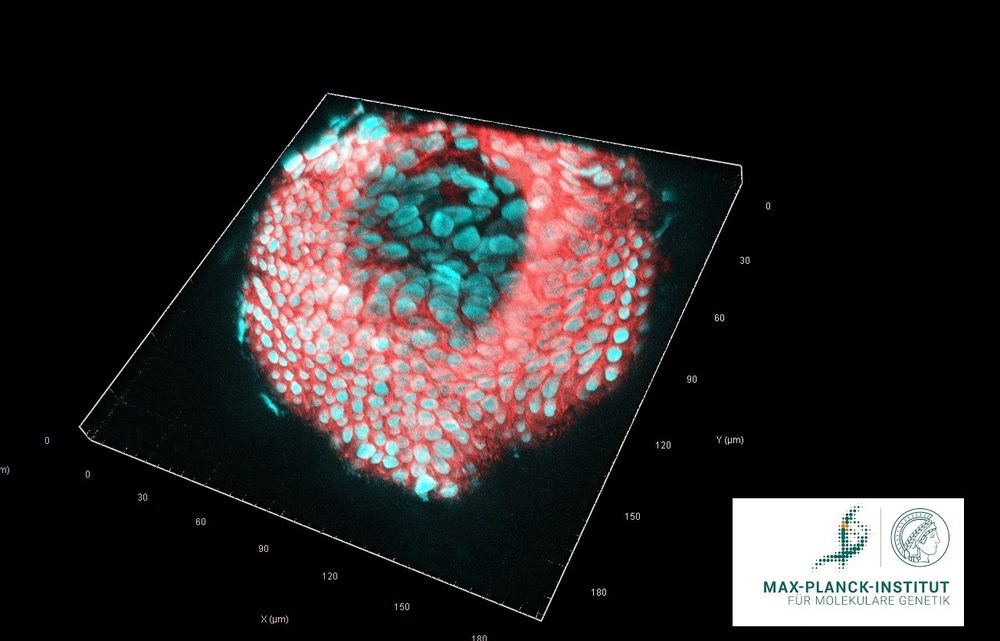
go.nature.com/3JoY43Y

go.nature.com/3JoY43Y
Apply by Jan 7th, 2026! www.molgen.mpg.de/IMPRSPhDproj...
#IMPRSBAC @freieuniversitaet.bsky.social @maxplanck.de
Apply by Jan 7th, 2026! www.molgen.mpg.de/IMPRSPhDproj...
#IMPRSBAC @freieuniversitaet.bsky.social @maxplanck.de
"Genome regulation during embryogenesis: Going loopy about enhancer regulation"
Register until Oct 31! 👇
www.molgen.mpg.de/embryo2026
Supported by the Weizmann Institute

"Genome regulation during embryogenesis: Going loopy about enhancer regulation"
Register until Oct 31! 👇
www.molgen.mpg.de/embryo2026
Supported by the Weizmann Institute
We very happy to share our latest work trying to understand enhancer-promoter compatibility.
I am very excited about the results of @blanka-majchrzycka.bsky.social, which changed the way I think about promoters
www.biorxiv.org/content/10.1...

We very happy to share our latest work trying to understand enhancer-promoter compatibility.
I am very excited about the results of @blanka-majchrzycka.bsky.social, which changed the way I think about promoters
www.biorxiv.org/content/10.1...
Huge thanks to @danielibrahim.bsky.social, @arnaudkr.bsky.social & @stemundi.bsky.social and fantastic people in their labs — what a journey! 🧪🔬
We very happy to share our latest work trying to understand enhancer-promoter compatibility.
I am very excited about the results of @blanka-majchrzycka.bsky.social, which changed the way I think about promoters
www.biorxiv.org/content/10.1...

Huge thanks to @danielibrahim.bsky.social, @arnaudkr.bsky.social & @stemundi.bsky.social and fantastic people in their labs — what a journey! 🧪🔬
Ever wondered how cells prepare their genomes to enable new cell-fates? In this team up with the Kind lab, we show that genes are repositioned in the nucleus to get ready for future activation and tissue formation. Read 🧵👇 to find out how and when this happens!
doi.org/10.1101/2025...

Ever wondered how cells prepare their genomes to enable new cell-fates? In this team up with the Kind lab, we show that genes are repositioned in the nucleus to get ready for future activation and tissue formation. Read 🧵👇 to find out how and when this happens!
doi.org/10.1101/2025...
Excited to share our work on "Ab-trapping," an antibody artifact causing misleading peripheral ("rim") staining in imaging & genomics (IF, CUT&Tag, CUT&RUN). Antibodies fail to penetrate structures, accumulating at the periphery. A 🧵👇
doi.org/10.1101/2025...

Excited to share our work on "Ab-trapping," an antibody artifact causing misleading peripheral ("rim") staining in imaging & genomics (IF, CUT&Tag, CUT&RUN). Antibodies fail to penetrate structures, accumulating at the periphery. A 🧵👇
doi.org/10.1101/2025...
As a 2025 Schmidt Science Fellow, the scientist will study a unique protein from Antarctic fishes that prevents freezing in sub-zero temperatures. 🐟 ❄️
See the news here: www.molgen.mpg.de/4870528/Juli...
schmidtsciences.bsky.social @naderij.bsky.social

As a 2025 Schmidt Science Fellow, the scientist will study a unique protein from Antarctic fishes that prevents freezing in sub-zero temperatures. 🐟 ❄️
See the news here: www.molgen.mpg.de/4870528/Juli...
schmidtsciences.bsky.social @naderij.bsky.social
www.molgen.mpg.de/4867821/2025...

www.molgen.mpg.de/4867821/2025...

Missed the chance to apply?
Our next call will open in autumn 2025:
www.molgen.mpg.de/IMPRS/applic...
#IMPRS #gradschool #PhD
Photo: © David Ausserhofer

Missed the chance to apply?
Our next call will open in autumn 2025:
www.molgen.mpg.de/IMPRS/applic...
#IMPRS #gradschool #PhD
Photo: © David Ausserhofer


Read more: www.molgen.mpg.de/4678674
Original Publication: www.nature.com/articles/s41...

Read more: www.molgen.mpg.de/4678674
Original Publication: www.nature.com/articles/s41...
„Schon in einer Generation wird dieses Versagen wahrscheinlich als Verbrechen gegen die Menschheit gewertet werden.“
www.sueddeutsche.de/projekte/art...

„Schon in einer Generation wird dieses Versagen wahrscheinlich als Verbrechen gegen die Menschheit gewertet werden.“
www.sueddeutsche.de/projekte/art...

